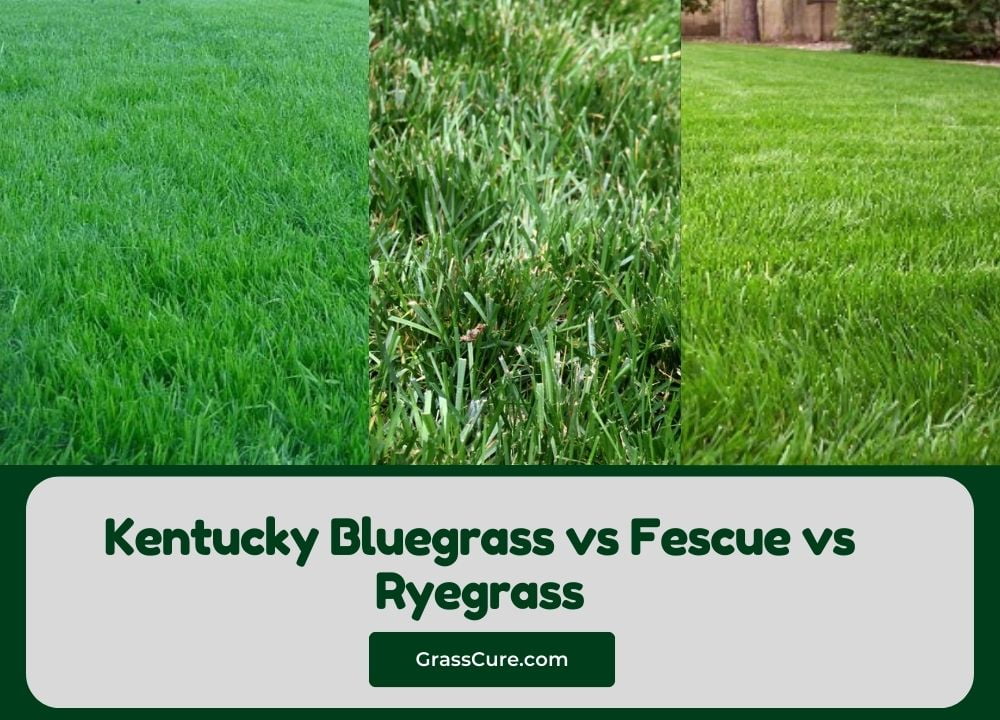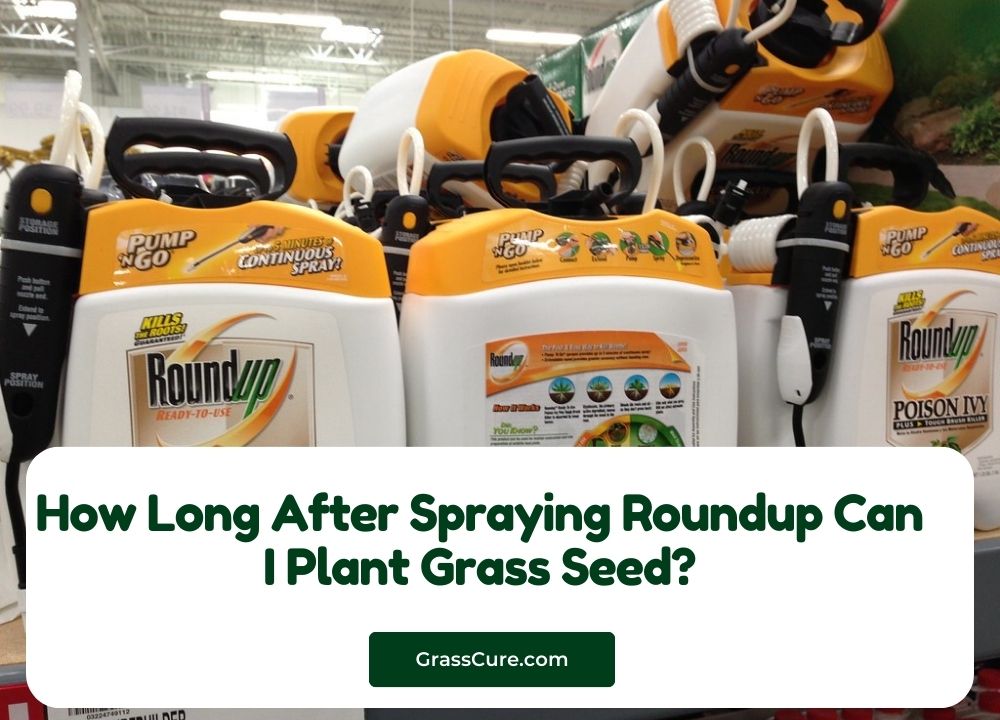Choosing the right type of grass for your lawn is essential for achieving a lush, healthy landscape. Among the most popular grass varieties are Kentucky Bluegrass, Fescue, and Ryegrass, each offering unique characteristics and benefits. Whether you’re looking for a vibrant green lawn, a drought-tolerant option, or quick establishment, understanding the differences between these grass types will help you make an informed decision. In this post, we will explore the key features, advantages, and ideal use cases for Kentucky Bluegrass, Fescue, and Ryegrass to guide you in selecting the best option for your needs.
Difference between Kentucky Bluegrass, Fescue,Ryegrass
Overview of Grass Types
A. Kentucky Bluegrass
Kentucky Bluegrass is a popular choice for homeowners seeking a lush, vibrant lawn. Characterized by its rich green color and fine texture, this grass type thrives in cool-season areas, particularly in the northern regions of the United States. Kentucky Bluegrass forms a dense, carpet-like lawn, making it ideal for recreational areas and sports fields. However, it requires consistent moisture and well-drained soil to reach its full potential.
B. Fescue
Fescue is a versatile grass type that encompasses several varieties, including tall fescue and fine fescue. Tall fescue is known for its drought resistance and adaptability to various climates, making it a great choice for transitional zones. Fine fescue, on the other hand, has a softer texture and is often used in shaded areas. Fescue grasses are low-maintenance and can withstand heat and drought, making them suitable for both residential and commercial landscapes.
C. Ryegrass
Ryegrass is known for its rapid germination and establishment, making it a popular choice for quick lawn fixes and overseeding. There are two main types: annual and perennial ryegrass. Annual ryegrass is often used for temporary lawns or erosion control, while perennial ryegrass offers durability and a lush appearance for long-term use. Ryegrass thrives in cool-season areas and prefers well-drained soils, but it may struggle in extreme heat, making it best suited for moderate climates.
Comparative Analysis
A. Growth Patterns
- Kentucky Bluegrass: This grass type exhibits a slower growth rate initially but develops a dense root system over time. It thrives in cooler temperatures and experiences peak growth during spring and early fall.
- Fescue: Fescue grasses have a more adaptable growth pattern, with tall fescue growing robustly in both cool and warm conditions. Fine fescue typically grows well in shade and can establish quickly, making it versatile for various landscapes.
- Ryegrass: Known for its rapid germination, ryegrass establishes quickly within 5 to 10 days. It grows vigorously in cool conditions, making it ideal for quick patches and overseeding in existing lawns.
B. Climate Adaptability
- Kentucky Bluegrass: Best suited for cooler climates, Kentucky Bluegrass prefers temperatures between 60°F and 75°F. It struggles in extreme heat and drought conditions, requiring regular watering to maintain health.
- Fescue: Fescue grasses are highly adaptable and can thrive in a range of climates, from cool to transitional zones. Tall fescue is particularly known for its drought resistance, making it suitable for areas with varying rainfall.
- Ryegrass: Ryegrass performs well in cooler climates but can suffer in extreme heat. While it can tolerate some drought, it generally requires consistent moisture for optimal growth, especially during summer months.
C. Maintenance Requirements
- Kentucky Bluegrass: Requires regular mowing (around 2 to 4 inches in height), fertilization, and adequate watering to prevent disease. It may need more frequent attention during hot, dry spells.
- Fescue: Low maintenance compared to Kentucky Bluegrass, fescue grasses require less frequent mowing and can withstand occasional drought. Fertilization needs are moderate, primarily focusing on the fall season.
- Ryegrass: Typically requires regular mowing and is best fertilized in the fall and spring. Although easy to establish, it may need additional attention to prevent disease, especially in warmer conditions.
This comparative analysis highlights the strengths and weaknesses of each grass type, helping homeowners and landscapers choose the best option based on their specific climate, lawn goals, and maintenance preferences.
Pros and Cons
A. Kentucky Bluegrass
Pros:
- Aesthetic Appeal: Known for its rich green color and fine texture, Kentucky Bluegrass creates a lush, attractive lawn.
- Dense Growth: It establishes a thick, carpet-like lawn that can withstand foot traffic, making it ideal for recreational areas.
- Self-Repairing: The grass has a unique ability to spread through underground rhizomes, allowing it to fill in bare spots naturally.
Cons:
- High Maintenance: Requires regular watering, fertilization, and mowing to keep it healthy and looking its best.
- Heat Sensitivity: Struggles in extreme heat and drought conditions, making it less suitable for warmer climates without adequate irrigation.
- Susceptibility to Diseases: More prone to fungal diseases and pests, especially in humid conditions.
B. Fescue
Pros:
- Drought Resistance: Particularly tall fescue is known for its ability to withstand dry conditions, making it a good choice for areas with less rainfall.
- Low Maintenance: Generally requires less mowing and fertilization compared to Kentucky Bluegrass, making it easier to care for.
- Versatile Growing Conditions: Adapts well to a variety of climates and soil types, including shaded areas.
Cons:
- Less Lush Appearance: While it is durable, fescue does not provide the same dense, rich look as Kentucky Bluegrass.
- Variety Differences: Different types of fescue have varying maintenance and growth requirements, which can complicate selection.
- Establishment Time: Some fescue varieties may take longer to establish compared to quick-germinating grasses like ryegrass.
C. Ryegrass
Pros:
- Quick Germination: Ryegrass establishes rapidly (within 5 to 10 days), making it ideal for quick patches or overseeding.
- Lush Appearance: Offers a vibrant green lawn that can enhance the aesthetic appeal of outdoor spaces.
- Good for Cool Seasons: Thrives in cooler temperatures and can tolerate some shade, making it suitable for various lawn situations.
Cons:
- Temporary Solution: Annual ryegrass is not durable for long-term use, as it typically dies off in the heat of summer.
- Water Requirements: Requires consistent moisture for optimal growth, especially during dry spells, which can be challenging in hot climates.
- Disease Prone: Like Kentucky Bluegrass, ryegrass can be susceptible to diseases, particularly in warm, humid conditions.
This pros and cons section provides a clear overview of the benefits and drawbacks of Kentucky Bluegrass, Fescue, and Ryegrass, aiding readers in making an informed choice based on their specific lawn care needs and environmental conditions.
Best Use Cases
- Kentucky Bluegrass: Ideal for homeowners seeking a lush, beautiful lawn in cooler climates. It’s perfect for high-traffic areas like sports fields, parks, and residential lawns where aesthetic appeal and density are prioritized. However, it requires consistent moisture and maintenance, making it less suitable for arid regions.
- Fescue: Best for a low-maintenance lawn that can adapt to varying climates and soil types. Tall fescue is particularly effective for transitional zones and drought-prone areas, while fine fescue is excellent for shaded gardens. Fescue is an excellent choice for commercial landscapes and residential lawns where durability and resilience are key.
- Ryegrass: The go-to choice for quick fixes, overseeding, and temporary lawns. Its rapid germination makes it perfect for homeowners looking to establish a lawn quickly or for those needing to patch up existing grass. Ryegrass is suitable for cool-season areas and can be an excellent choice for overseeding Kentucky Bluegrass in the fall to enhance color and density.
Conclusion
Choosing the right grass type for your lawn is crucial for achieving a healthy, vibrant landscape. Kentucky Bluegrass, Fescue, and Ryegrass each offer unique characteristics, benefits, and maintenance requirements that cater to different needs and environments. Kentucky Bluegrass excels in aesthetic appeal and density, making it ideal for cooler climates and high-traffic areas, while Fescue provides versatility and low maintenance, suitable for drought-prone and shaded areas. Ryegrass shines in its quick establishment, perfect for temporary solutions and overseeding. By considering your specific lawn goals, climate, and maintenance preferences, you can select the best grass type to create the lawn of your dreams.
Additional Resources
- Local Extension Services: Contact your local agricultural extension office for personalized advice on grass selection and lawn care specific to your region. They can provide soil testing, pest management strategies, and tailored recommendations.
- Lawn Care Guides:
- The University of Kentucky’s Lawn Care Guide: A comprehensive resource covering grass types, maintenance practices, and pest control.
- Penn State Extension’s Lawn Care Resources: Offers articles and tips on establishing and maintaining healthy lawns.
- Online Gardening Communities: Join online forums or social media groups dedicated to lawn care, such as:
- The Lawn Forum: A community for lawn care enthusiasts to share tips, experiences, and advice.
- Reddit’s r/lawncare: A subreddit where users discuss all things related to lawn maintenance and grass types.
- Books on Lawn Care:
- “The Lawn Bible: How to Keep It Green, Groomed, and Growing Throughout the Season” by Robert Kourik: A comprehensive guide on lawn care and maintenance.
- “Lawn Care for Dummies” by Lance Walheim and The National Gardening Association: A beginner-friendly resource that covers grass types, maintenance, and troubleshooting.
- YouTube Channels:
- Lawn Care Nut: Offers practical tips and how-to videos on maintaining a healthy lawn.
- GCI Turf Academy: Provides insights into lawn care, focusing on different grass types and best practices.
These resources can enhance your understanding of grass types and lawn care practices, helping you create and maintain the perfect lawn for your specific needs.






